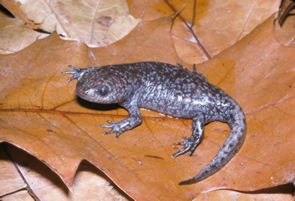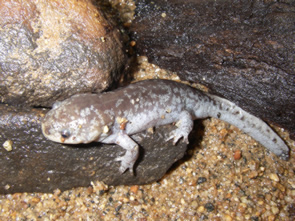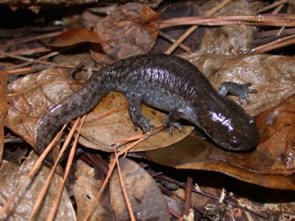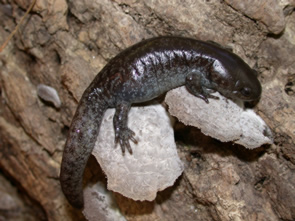
Ambystoma talpoideum
Photo by Ed Corey
Description: Adult mole salamanders have small, chunky bodies with relatively short tails and broad heads. They are usually 4 to 5 inches in length. Within the species there is a great deal of color variation. Mole salamanders may be brown, grey, or black with light speckling concentrated on their tail and back. The larvae can be grey or brown and are distinguished by two yellowish ventral stripes. These stripes are also present in neotenic adults (adults that retain juvenile characteristics) and recently metamorphosed individuals.
Habitat/Range: Mole salamanders range across the coastal plain of the southeastern United States and may be found in isolated populations in North Carolina. They inhabit floodplain forests near swampy areas or upland forests near bodies of water that are used as breeding ponds.
Diet: Larvae eat mostly aquatic invertebrates and the larvae of other species. Adults mainly eat invertebrates such as arthropods and worms.
Reproduction: Neotenic adults mate and lay eggs between September and March. Terrestrial adults usually reproduce between October and March depending on local conditions. Males and females will migrate to breeding pools (bodies of water with no fish) to mate. The females will lay anywhere from 200 to 700 eggs and attach them to aquatic vegetation. It takes two years for juveniles to reach sexual maturity.

The shaded region represents the range of the mole salamander in North Carolina.



Photo by Kristen Cecala
 - SREL - Pierson Hill.jpg)

Photo by Pierson Hill
Photo by JD Willson
